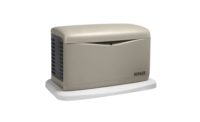Keeping your kids occupied and happy is a standard parenting goal. But keeping your kids occupied and happy when they are out of school for the foreseeable future has moved well beyond the tricks and tips we normally use. So, what’s a busy parent to do?
As a parent and someone who has worked in STEM education for a long time, I have a few ideas. My organization, DiscoverE, is a nonprofit focused on the E (for engineering) in STEM, and we have tons of free projects for kids ages 3-18. Better yet, most of the materials required are already in your house.
Got plastic cups? Challenge your child to build the tallest tower possible. Then ask them to knock it down and start all over. I’ve seen kids do this simple activity for two hours straight! Have some index cards? Encourage your daughter to design a structure that can hold up a soup can using only one index card and some tape. Believe me – it’s possible and fun.
Here are some tips for heading off the “I’m bored, there is nothing to do” comment we all dread.
1. Create an Activity Notebook — I used an old three ring binder and printed out the instructions for a bunch of hands-on activities. (Hint: When selecting activities, look for ones that are open-ended. Meaning they don’t have a ‘recipe’ to follow. But instead offer a challenge, a list of materials, and they encourage your child to figure it out.) I then gave the book to my daughter and encouraged her to look through it and find things that inspired her or that she wanted to try. Here are some links to a few of our favorite activity resources: http://discovere.org, www.pbskids.org, and www.sciencebuddies.org.
2. Make a Supply Box — Having basic materials on hand gives your kids the chance to direct their own learning and is an easy answer to the I’m bored statement. Here’s a list to get you started, but don’t stop here: baking soda, balloons, markers, newspapers, notebook, different kinds of paper, paper clips, paper cups, pencils, rubber bands, ruler, scissors, straws, string, tape, toothpicks, vinegar, old CDs, empty toilet paper rolls, cardboard, empty bottles, etc. Keep brainstorming as you look around your house or apartment. I stored my items in an extra drawer in my kitchen, but it can be as simple as a cardboard box in the corner.
3. Be Prepared for a Mess — Active learning can be a bit messy and that’s okay – at least that’s what I keep telling myself. Big or little projects that engage your child’s imagination and learning are worth it. And who says you have to clean it up? That’s another project to keep them busy.
4. Encourage Them — Not all activities are going to work or turn out like your child thought. And that’s okay. In fact, that might be the best outcome of all, as that gives you an opportunity to encourage them to explore what didn’t work and what they might do differently next time. One word of caution — don’t over cheerlead, as kids can see right through that. And don’t fix it either. Ask them questions like, “Can you describe what you were hoping would happen? What actually happened? How were they different? What might you try instead?”




